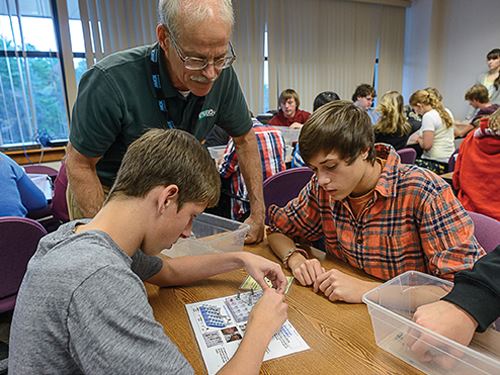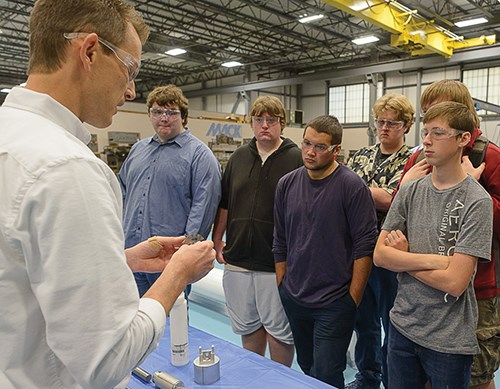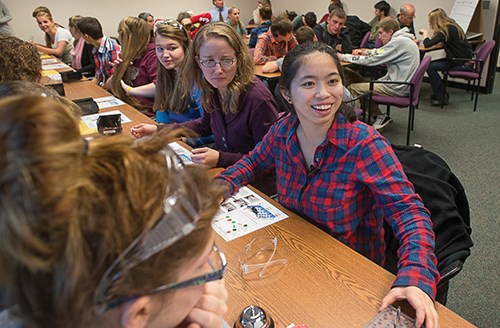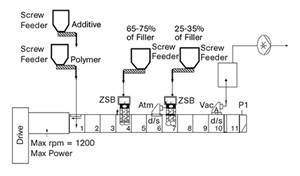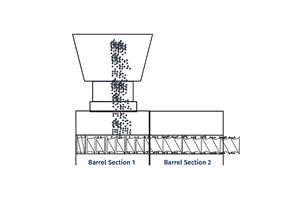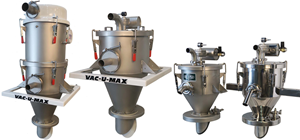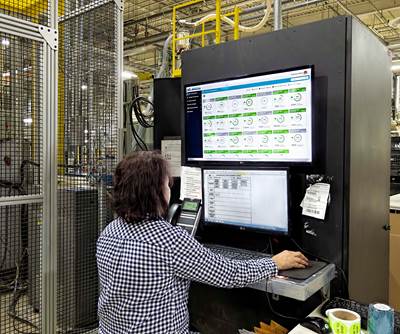What Processors Are Doing To Bridge the Skills Gap
Special Report: Workforce Development
Seasoned technicians are leaving, and replacing them with youngsters is a challenge. But some processors have taken dramatic initiatives to change how young people think about manufacturing and are bringing the next generation into the fold.
At the very moment that manufacturing is resurgent in the U.S., the plastics industry is ill-equipped to respond. Reaping the twin harvests of a ready-to-retire skilled workforce and a meager crop of new talent, plastics—like many other sectors—is scrambling to respond to the current crisis and cultivate new talent.
With 56 years of shop experience and 25 as an educator, Joe Genc brings a unique perspective to plastics’ current predicament. He’s a tool engineer at Berry Plastics Mold Manufacturing (formerly Rexam) in Buffalo Grove, Ill., as well as a moldmaking instructor for the Technology & Manufacturing Association (TMA), Park Ridge, Ill. (tmanet.com). At age 70, Genc is part of a generation of plastics professionals who are closer to retirement than to the start of their careers, but he is also among those trying to address the so-called skills gap. These days, he undertakes the latter task with a heightened sense of urgency.
Observes Genc, “A lot of manufacturing is coming back, and now the big problem becomes, ‘What the hell do we do?’ A lot of the people who would have been mold or die makers are into something else. The guys who have been in it forever—people like me—we’re lucky to have these people, but they’re only going to be here so much longer, including myself.”
Julie Horst, director of communications at custom injection molder and contract manufacturer, Mack Molding, Arlington, Vt., says her company harbors the same concerns about building staff to meet the challenge of new business. “This country lost an awful lot of manufacturing overseas,” Horst says. “During that time period, we also lost a generation of people who were growing up within a manufacturing mindset and working in manufacturing jobs.” Now manufacturing is coming back—some of it through “reshoring”—but where are the people to implement it?
Interviews with processors, educators, and government officials reveal an acute awareness of the skills gap, as well as a number of initiatives to not only deal with the immediate problem of finding help as work returns, but also piquing kids’ interest in manufacturing to create a pipeline of skilled workers for the future.
600,000 OPEN POSITIONS
How tight is the current skilled worker market? In May, The National Press Club hosted an event entitled “The Manufacturing Skills Gap: How a Shortage of Skilled Workers and Needed Education is Affecting the Economic Recovery,” where speakers cited two worrisome figures: There are approximately 600,000 skilled manufacturing jobs that are currently unfilled in the U.S., and 2.7 million manufacturing workers are expected to retire in the next 10 years.
Part of the gap can be explained by the overall decline in manufacturing over the last three decades or so. According to a March 2011 study by Deutsche Bank Group, manufacturing employment has fallen 40% from its peak in 1979, while employment in the rest of the economy has risen by almost 70%. A Deloitte study found that manufacturing’s share of U.S. gross domestic product (GDP) went from 26% in 1947 to only 11% in 2011, with 6 million manufacturing jobs lost since 2002.
That trend, if not the total numbers, is now reversing. Manufacturing added 28,000 jobs in July, according to the Bureau of Labor Statistics; and over the prior 12 months, the sector tacked on an average of 12,000 jobs/month, primarily in durable goods. Overall, a stellar record, given the broader economy’s faltering job creation since the end of the Great Recession.
TURNING SHOP CLASS INTO COMPUTER LAB
That burgeoning need for new manufacturing workers has been met with a mere trickle of new talent. Some blame a shift in educational priorities. One of these is John Winzeler, president of Chicago custom injection molder Winzeler Gear (see July On-Site feature) and a third-generation manufacturing professional. “We screwed it up in the U.S. by turning all these industrial arts classes in the high schools in the 1990s into computer labs,” Winzeler says. “So what we’re suffering through now is what the schools did to us in the ’90s. The people that run our organizations today came out of good industrial arts programs. They had the mental capacity to go to college but either didn’t know what they wanted to be when they grew up, or, didn’t have the funding or focus to go, so they started working in a factory and have since gotten their education in short spurts. I can’t begin to find that caliber of person today.”
In a bid to locate, or create, qualified workers, many in injection molding have turned to RJG Inc., Traverse City, Mich., which began to offer training courses in the mid 1980s and developed its Master Molder certification in 1999, in addition to its eDart process-monitoring technology. Mike Groleau, project manager, says the head count in the training side of his company’s business has nearly tripled over the last 15 years, with its Master Molder Certification becoming a de facto standard for many shops seeking qualified process technicians.
Groleau also sees the current shortage of workers as being at least partially the result of the U.S. education system, noting how many of his clients struggle to find workers that can think critically. “Critical thinking is probably the hardest part right now,” Groleau says, noting that the spike in standardized testing at schools de-emphasizes these skills. “I think what’s more important is the ability to learn, the ability to think, and the ability to work in a team environment. We’ve heard a lot of feedback that those are real skill sets shops want.”
Francine Petrucci, a second-generation moldmaking professional and president of B A Die Mold, Aurora, Ill., remembers her father, who founded the company in 1968, using shop classes and career fairs as an entrée to recruit potential moldmaking talent. “My dad used to go to the high school he graduated from and discuss mold manufacturing,” Petrucci says, “and he actually recruited a lot of young guys to at least try the apprenticeships. Then when they got rid of all those programs in the school—the machine shop, CAD, drafting—there wasn’t really a good way to get in there and talk to people about it, because they just weren’t pushing it at the schools.”
OPENING EYES TO MANUFACTURING
Today, instead of waiting for schools bring manufacturing and technology back in, many companies are bringing the schools to their plants via open houses, apprenticeships, job shadowing, and more. Four years ago, Mack Molding began an internship program, partnering with colleges and universities to recruit potential talent. Last year, it went a step further, and participated in National Manufacturing Day, inviting four area high schools to visit and opening its doors to more than 90 students for a day of learning and interaction. Both programs allow younger people to see modern manufacturing firsthand and replace clichéd images of grime and grunge.
“We wanted to open up their eyes to what a modern manufacturing site looks like with automation, with a lot of computerization,” says Mack Molding’s Horst, noting that her company’s involvement in medical device manufacturing means its factory has a “very clean, pristine work environment that’s very high-tech and appeals to high school students.”
“When you walk into one of our buildings, I think people are more often pleasantly surprised with the working environment here,” says Kevin Dailey, human resources director for Mack’s Northern Division. “It’s not the factory that they see on TV from the old days.”
Mack’s internship program has grown every year since its inception, largely through word of mouth between participants and their peers, with 20 involved this year across multiple functions at the company. Four former interns have moved on to become full-time Mack employees, and all have contributed virtually from day one, according to Horst.
“We got the interns in and saw that they were not only very skilled but also very quick to pick up on new things,” Horst explains. “We realized that it was really very fertile ground.” That ground has been fertile in talent and business success, according to Dailey. “We really do get a return on that investment,” Dailey says. “Not only on the recruiting and workforce development side, but the interns actually do very good work. It’s a good arrangement for both sides.”
In December 2012, moldmaker United Tool and Mold Inc. (UTM), Duncan, S.C., announced the first federally recognized School-to-Registered-Apprenticeship program in the Upstate region of South Carolina and the second in the state overall. Students participate in the program for up to two years, during which they’re paid, and at the end of the program, they earn an apprenticeship certificate from the U.S. Department of Labor.
Jeromy Arnett, UTM’s production administration manager, notes that the firm’s president, Scott Phipps, was himself a product of an apprenticeship program in the 1970s. “Our apprenticeship program was really driven by Phipps,” Arnett says, “because it’s something that he went through and it’s a good way to build skills and earn a living.”
Beginning in 2008, the company began investigating a certified program. “Every day, your workforce gets older, and if you’re not doing anything to combat that, you lose valuable skill sets from employees that retire,” Arnett says. “We couldn’t go out on the street and find someone that has the skill set to be a moldmaker, so that’s partly the reason why we chose to go down the apprenticeship path.”
In addition to pulling in young adults from area technical schools, UTM has begun to bring in high schoolers who enter the program during the second half of their senior year. “Instead of going to a career center or vocational school, they would come to work,” Arnett says. “They’d go to their regular high school for half a day, and then come to us and work.” UTM also works with high school juniors, employing them over the summer before their senior year. Many of these teens are then “buddied up” with a mentor to transfer life and work skills to the next generation of moldmakers.
“When we started in 1995, the core group of individuals at UTM was 25 to 35 years old, and now, that core group of individuals is 45 to 55, and we started noticing we’re not getting any younger,” Arnett says. “Our key employees are going to start retiring, and we don’t have anyone ready to step in and fill those positions.”
UTM hasn’t stopped with high school kids. Arnett explains that the company speaks with elementary school kids, particularly ones engaged in STEM (science, technology, engineering, math) programs. “We actively go out and speak at the STEM nights they have at elementary schools. We go to middle school career fairs. We’re actively involved in job shadowing with our local school district. Anytime we’re given the opportunity to go speak to a group of kids, we go.”
In doing so, Arnett says the goal is to change the perception of industry among young people. “Manufacturing now—and I’m 40—has changed from when I graduated high school. It’s different from when my dad started when he was coming out of high school 40 years ago. Manufacturing now is not some dimly lit room that has dirty floors and cobwebbed ceilings. Manufacturing now is technology-based, it’s robots, it’s cloud computing.”
If nothing else, companies like Mack and UTM have seen the tremendous benefit of using internships and open houses to allow today’s young people, and their parents, to see what manufacturing is really about. B A Die Mold’s Petrucci says her company is working on restarting its apprenticeship program, but in the interim, she has actively reached out to area schools, letting them know that her shop’s doors are open.
“We feel like if we can get these teachers and parents and kids into these facilities and they can see that they’re brightly lit, computer driven with automation, that really will change their perception of what manufacturing is, let alone mold manufacturing,” Petrucci says.
Denver-based custom injection molder and contract manufacturer Intertech Plastics has long seen value in reaching out to younger people, particularly economically disadvantaged kids, as beneficial to the bottom line and the community, according to Noel Ginsburg, president and founder. “Outreach is philanthropic, but I think it’s also good business,” he explains. “You have to build the pipeline. The challenge with a company like Intertech is, if we’re a minority—if there are not a lot of us that are doing this—it’s kind of throwing pebbles into a lake. It’s not going to make a big difference. So I think more and more companies are beginning to engage, and I think the larger companies are realizing that that skills gap can’t be resolved simply by the schools, it’s got to be a partnership of business and industry with the schools and with the community to build and strengthen that pipeline because it’s a long-term investment.”
BUILDING YOUR WORKFORCE FROM SCRATCH
Companies that don’t engage and then decry the lack of skilled workers, need to take a step back, according to Ginsburg. “I think for industry to say, ‘They should just show up at my front door so I can plug them in,’ that’s not the way it works. We have to make an investment, and I think that more companies are seeing that. They’re making investments in the community even if it doesn’t provide a direct return.”
For all of the companies contacted for this article, these programs and outreach allow them to take control of their future. “So we’re building our workforce in real time and on the factory floor,” Ginsburg says. “We couldn’t get techs and we couldn’t get maintenance people, so we’re building them. You know, it’s a longer process—you can’t do it overnight—but the more we invest in them and more loyal we are to them, the more loyal they are to us, and the stronger our business becomes.”
RJG, which has added trainers in Europe and China, as well as a new training facility in Atlanta, says its uptick in training business directly correlates to that need to nurture talent internally. “People are realizing, ‘Hey, we’re not just going to be able to go out and hire someone, we’re going to have to develop people,’” Groleau says. “The simple parts have all gone overseas. What’s being molded in the U.S. now is a lot more technical, a lot more complex, and it requires a much better understanding of the process, of the tooling.”
Ultimately, the companies that bridge that skills gap and create the next generation of plastics professionals will reap the rewards of a still-growing industry. “If I can build the strongest team,” Intertech’s Ginsburg says, “I will outperform my competition.”
Related Content
Small Batches, Big Success
With no minimum order and an impeccable record of on-time delivery, Precision Color Compounds is becoming a force in the color masterbatch business.
Read MoreImproving Twin-Screw Compounding of Reinforced Polyolefins
Compounders face a number of processing challenges when incorporating a high loading of low-bulk-density mineral filler into polyolefins. Here are some possible solutions.
Read MoreHow to Configure Your Twin-Screw Extruder -- Part 2
Follow these tips to configure your twin-screw elements to promote feeding and solids conveying.
Read MoreSafety, Recycling, and Compounding Trends Bring New Opportunity to 70-Year-Old Company
NPE2024: Vac-U-Max presents pneumatic conveying solutions for powdered materials.
Read MoreRead Next
People 4.0 – How to Get Buy-In from Your Staff for Industry 4.0 Systems
Implementing a production monitoring system as the foundation of a ‘smart factory’ is about integrating people with new technology as much as it is about integrating machines and computers. Here are tips from a company that has gone through the process.
Read MoreFor PLASTICS' CEO Seaholm, NPE to Shine Light on Sustainability Successes
With advocacy, communication and sustainability as three main pillars, Seaholm leads a trade association to NPE that ‘is more active today than we have ever been.’
Read MoreBeyond Prototypes: 8 Ways the Plastics Industry Is Using 3D Printing
Plastics processors are finding applications for 3D printing around the plant and across the supply chain. Here are 8 examples to look for at NPE2024.
Read More

